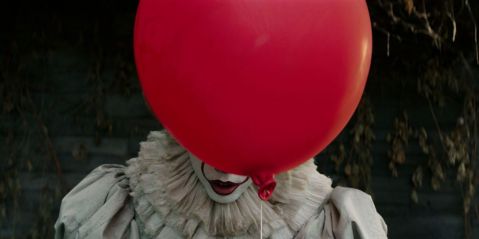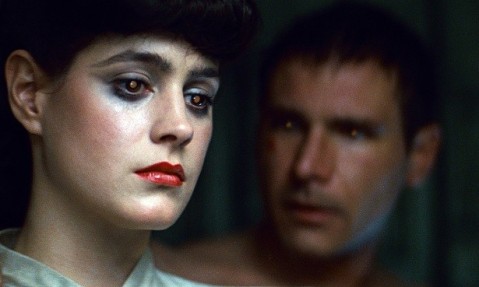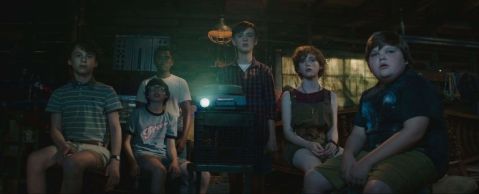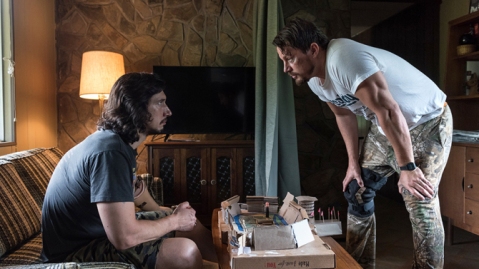Top 5 Stephen King Adaptations
To celebrate the release of the new It adaptation, here is our take on the best films to grace the screens based on Stephen King’s work. The miniseries that first adapted King’s tale of The Losers Club is nowhere close to making the cut, with Tim Curry being the only redeeming feature in the three-hour long bore. The films on this list aren’t earning a spot for how faithfully they keep to the source material, but for how they stand alone as great films. So, films that drastically altered elements of King’s work are still contenders. As for hopes for the new It venture, a great King adaptation understands that there are more to his stories than the monsters in them, and attempt to explore the deeper themes of the material. Shockingly out of the following list only one King adaptation has earned an Academy Award.

#5 – The Mist (2007)
By no means the best crafted of the Stephen King films or the most thought provoking, but a lot of fun and earns a spot for one key reason, the ending. The climax of the film is much darker than King’s original but is still superb and among some of the most striking climax to any film. The ending only works due to the fact you are invested in the characters by this point. To add to this, it has some great creature features and explores the psychology of the situation well.
#4 – Misery (1990)
At number four, the Oscar winner of the group, as Kathy Bates earned her Best Actress award for a brilliant performance in this film. One of the most memorable King horror films while being the least violent. The film creates tension and character drama beautifully in a very confined set. Directed by Rob Reiner in the middle of a great streak of films including When Harry Met Sally… and The Princess Bride. While Kathy Bates is amazingly unhinged, the work of co-star James Caan shouldn’t be overlooked.
#3 – The Shawshank Redemption (1994)
One of the few works of King to contain no supernatural elements and to be a strip down drama. Few people are aware that this is a King adaptation, a yet it is one of the most celebrated films of all time. It happens to be the highest rated film on IMDB with a score of 9.2/10, lying equal with The Godfather. Why this film above all others is held with such high regard is a mystery. Some reasons that stand out are how it deals with the themes of friendship and hope with such precision and realism.
#2 – The Green Mile (1999)
Breaking into the two films that I believe to be better than ‘the best film of all time’, The Green Mile. Another work of that explores prison life, but here King brings in those supernatural elements. A unique work that many may find too long and sentimental. But the stunning performances across the board, especially from the late Michael Clarke Duncan, and the heart wrenching nature of the film makes it truly memorable. So brutal and moving in parts it’s hard to watch, but worth the pain.
#1 – The Shining (1980)
A conventional choice for first place, as the partnership of the ‘King’ of Horror and one of the masters of cinema, Kubrick, created a true classic. A film that has been studied for years since its release and is mentioned in the same breath as other horror masterpieces such as Psycho and The Exorcists. There is so much here to discuss, but co-screenwriter Diane Johnson summarised the film well, stating when making the film that “It must be plausible, use no cheap tricks, have no holes in the plot, no failures of motivation… it must be completely scary”.
 Released just three years after Ridley Scott had cemented himself in the sci-fi genre with Alien in 1979, he returned to the genre for a much more thought provoking tale. While Alien showed how he could masterfully create new worlds with an authentic feel, in Blade Runner he showed how these sci-fi worlds had the capability of deeper meaning and reflection. Not only does the story of Blade Runner bring about deep questions, but literally the architecture of the world Scott create adds to and develops the themes. That’s one of the striking elements of Blade Runner, how the base storyline is a simple as Alien, but the setting, imagery, dialogue and sound all take this plot and help develop it into something more profound.
Released just three years after Ridley Scott had cemented himself in the sci-fi genre with Alien in 1979, he returned to the genre for a much more thought provoking tale. While Alien showed how he could masterfully create new worlds with an authentic feel, in Blade Runner he showed how these sci-fi worlds had the capability of deeper meaning and reflection. Not only does the story of Blade Runner bring about deep questions, but literally the architecture of the world Scott create adds to and develops the themes. That’s one of the striking elements of Blade Runner, how the base storyline is a simple as Alien, but the setting, imagery, dialogue and sound all take this plot and help develop it into something more profound. In keeping with the legend of It, twenty seven years on from the original mini-series, we have the return of The Losers’ Club and Pennywise. Directed by Andrés Muschietti whose only previous experience is the moderate successful horror flick Mama, the story of Stephen Kings It has been redone and updated. This film tells the story of what is commonly referred to as Chapter 1, while the book doesn’t make such a clean distinction, in which the characters face Pennywise for the first time as children. An actor yet to become as well-known as his brothers and father, Bill Skarsgård, plays the evil clown.
In keeping with the legend of It, twenty seven years on from the original mini-series, we have the return of The Losers’ Club and Pennywise. Directed by Andrés Muschietti whose only previous experience is the moderate successful horror flick Mama, the story of Stephen Kings It has been redone and updated. This film tells the story of what is commonly referred to as Chapter 1, while the book doesn’t make such a clean distinction, in which the characters face Pennywise for the first time as children. An actor yet to become as well-known as his brothers and father, Bill Skarsgård, plays the evil clown.
Recent Comments